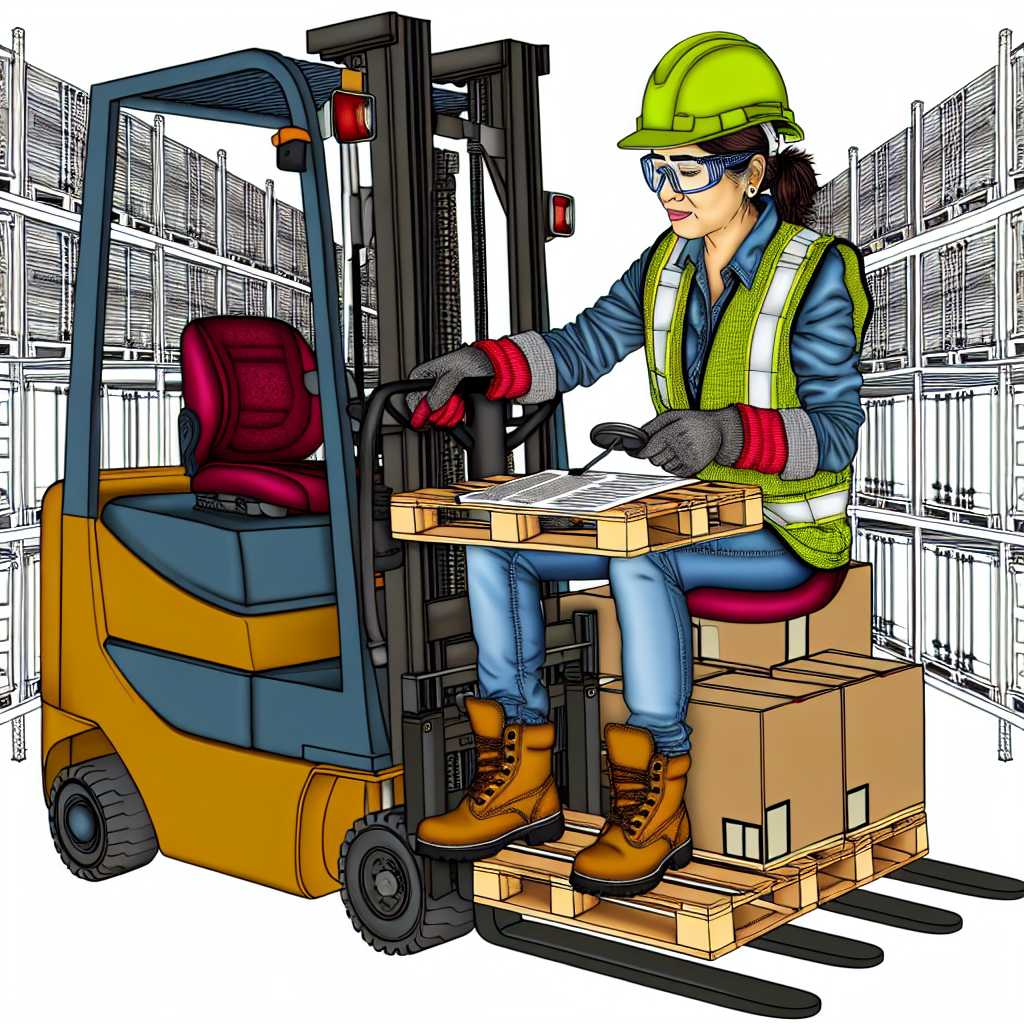Brief overview of the importance of having the right tools and equipment for freight handlers.
Mention how having the right tools can increase efficiency, productivity, and safety in the workplace.
Importance of Proper Equipment:
Having the right tools is crucial for freight handlers to perform their tasks effectively.
Efficiency is key in the freight industry, and having the necessary equipment can enhance operations.
Increased Productivity:
With the right tools and equipment, freight handlers can handle shipments more quickly and efficiently.
Streamlining processes through proper tools can result in higher productivity levels.
Enhanced Safety Measures:
Proper equipment ensures the safety of freight handlers while they handle heavy and sometimes hazardous materials.
By using specialized tools, employees can minimize the risk of accidents and injuries.
Optimized Work Environment:
Having the right tools at hand creates a more organized and efficient work environment for freight handlers.
By investing in quality equipment, companies can promote a culture of safety and professionalism.
Pallet Jacks
Pallet jacks are essential for moving heavy pallets of goods efficiently.
There are different types of pallet jacks available such as manual pallet jacks, electric pallet jacks, and high lift pallet jacks.
Manual pallet jacks are great for small warehouses, while electric pallet jacks are ideal for larger warehouses with higher demands.
High lift pallet jacks are designed to lift pallets to higher heights, making them suitable for storage in compact spaces.
When choosing a pallet jack for freight handling operations, consider the weight capacity, lift height, and maneuverability.
Look for features such as ergonomic handles, durable construction, and smooth steering for ease of use and longevity.
Make sure the pallet jack can fit standard pallet sizes and has safety features like brakes and overload protection.
Regular maintenance and inspection of pallet jacks are crucial to ensure safe and efficient handling of freight.
Forklifts are essential tools for freight handlers due to their versatility in handling various types of cargo.
Whether it’s heavy pallets, oversized boxes, or fragile items, forklifts provide a reliable and efficient way to transport goods within a warehouse or loading dock.
Transform Your Career Today
Unlock a personalized career strategy that drives real results. Get tailored advice and a roadmap designed just for you.
Start Now- They can lift and move heavy loads with ease, saving time and reducing the risk of injury for workers.
- With different attachments and configurations available, forklifts can adapt to different types of cargo, making them a versatile tool for freight handlers.
Proper forklift training is crucial for freight handlers to ensure the safe operation of these powerful machines.
Without proper training, the risk of accidents and injuries increases, putting both workers and cargo at risk.
- Training should cover topics such as forklift operation, safety guidelines, load capacity limits, and proper maintenance procedures.
- Regular refresher courses should be provided to keep handlers up-to-date on best practices and safety protocols.
Safety tips for using forklifts in the warehouse:
- Inspect the forklift before each use to ensure it is in proper working condition.
- Follow speed limits and always keep a safe distance from other workers or equipment.
- Be aware of your surroundings and watch out for obstacles, uneven surfaces, or slippery conditions.
- Avoid overloading the forklift and make sure the load is properly secured before lifting or transporting.
- Never carry passengers on the forklift or use it for purposes other than transporting cargo.
Learn More: Risk Management Strategies in Logistics Operations
Dock Levelers:
Dock levelers bridge the gap between the warehouse and the truck.
They allow for smooth and efficient loading and unloading.
There are several types of dock levelers available.
These include hydraulic, mechanical, and air-powered levelers.
- Hydraulic Dock Levelers:
- Advantages include ease of operation, durability, and ability to handle heavy loads.
- Mechanical Dock Levelers:
- Advantages include low maintenance, cost-effectiveness, and reliability.
- Air-Powered Dock Levelers:
- Advantages include smooth operation, reduced maintenance, and energy efficiency.
To ensure the smooth operation of dock levelers, regular maintenance is crucial.
Here are some tips:
- Inspect the leveler for any signs of wear and tear regularly.
- Keep the leveler clean and free of debris to prevent malfunction.
- Check the hydraulic fluid levels and top up if necessary.
- Lubricate moving parts to reduce friction and ensure smooth operation.
- Test the safety features, such as lip extension and velocity fuse, regularly.
Discover More: Work-Life Balance Tips for Logistics Consultants
Strapping and Tying Tools:
Importance of securing cargo properly during transportation.
Different types of strapping and tying tools used by freight handlers.
Proper techniques for strapping and tying cargo to prevent damage.
When it comes to transporting freight, one of the most critical aspects is ensuring that the cargo is secured properly. This is where strapping and tying tools come into play, providing a secure way to keep the cargo in place during transit.
Importance of Securing Cargo Properly:
Properly securing cargo during transportation is essential for several reasons. Firstly, it helps prevent damage to the goods being transported.
When cargo is not secured properly, it can shift and move during transit, leading to damage or breakage.
Additionally, securing cargo properly is crucial for the safety of the freight handlers and other individuals involved in the transportation process.
Unsecured cargo can pose a significant risk of injury if it falls or shifts unexpectedly.
Different Types of Strapping and Tying Tools:
There are various types of strapping and tying tools that freight handlers use to secure cargo. Some of the most common tools include:
Transform Your Career Today
Unlock a personalized career strategy that drives real results. Get tailored advice and a roadmap designed just for you.
Start Now- Steel strapping: Strong, durable, and ideal for heavy-duty applications.
- Polyester strapping: Lightweight and flexible, suitable for securing medium to heavy loads.
- Banding tools: Used to tighten and secure strapping around the cargo.
- Ratchet straps: Adjustable and easy to use for securing different sized loads.
Proper Techniques for Strapping and Tying Cargo:
Proper techniques for strapping and tying cargo are essential to ensure that the goods remain secure during transportation. Here are some guidelines for effectively securing cargo:
- Inspect the cargo: Ensure that the cargo is properly stacked and evenly distributed.
- Select the right strapping material: Choose the appropriate strapping material based on the type and weight of the cargo.
- Secure the cargo: Use the selected strapping or tying tool to secure the cargo tightly.
- Check for tightness: Make sure that the strapping is pulled tight to prevent any movement of the cargo.
- Double-check the security: Verify that the cargo is secure and won’t shift during transportation.
By following these techniques and using the right strapping and tying tools, freight handlers can ensure that cargo is safely and securely transported without any damage or safety hazards.
Discover More: Freight Agent Career Longevity and Stability
Cargo Nets and Tarps:
Protecting cargo from external elements is essential to ensure the safety and integrity of the goods during transit.
Cargo nets and tarps play a vital role in safeguarding the cargo from damage caused by weather conditions, dust, debris, or theft.
Types of Cargo Nets and Tarps:
- Mesh Cargo Nets: Ideal for hauling smaller items like boxes, bags, or equipment. They provide good breathability and visibility.
- Heavy-Duty Tarps: Designed to withstand harsh weather conditions and protect large, heavy cargo from rain, snow, and UV exposure.
- Waterproof Cargo Nets: Perfect for transporting goods that are sensitive to moisture, such as electronics or perishable items.
Tips for Properly Securing Cargo Nets and Tarps:
- Choose the Right Size: Ensure that the cargo net or tarp completely covers and secures the load.
- Inspect for Damage: Before each use, check for tears, holes, or worn-out areas that may compromise the protection.
- Use Proper Fasteners: Securely attach the cargo net or tarp using hooks, bungee cords, or tie-down straps.
- Double-Check Security: Tighten all fasteners and adjust as needed to prevent any movement or shifting of the cargo.
- Regular Maintenance: Clean and inspect cargo nets and tarps regularly to ensure their longevity and effectiveness.
By utilizing the right cargo nets and tarps and following proper securing techniques, freight handlers can minimize the risk of damage to their cargo and ensure a successful transit process.
You Might Also Like: How to Build a Portfolio as a Packaging Engineer

Loading Ramps:
Loading ramps are essential tools that assist in the efficient transfer of goods between various elevations, such as from ground level to a truck bed or shipping container.
There are various types of loading ramps, including portable ramps, dock ramps, yard ramps, and modular ramps, each designed for specific applications and industries.
When using loading ramps, it is crucial to follow safety guidelines to prevent accidents and injuries. Some precautions include ensuring the ramp is secure, avoiding overloading, and using proper equipment such as wheel chocks and safety harnesses.
- Loading ramps facilitate the movement of cargo between different levels.
- Different types of loading ramps are available for various types of freight handling operations.
- Safety precautions must be followed when using loading ramps.
Hand Trucks and Dollies:
Hand trucks and dollies are essential for moving smaller items within the warehouse.
Different types of hand trucks and dollies are suitable for various types of cargo.
Proper techniques for using hand trucks and dollies help prevent injury and damage to goods.
Hand trucks and dollies are indispensable tools for freight handlers when it comes to moving smaller items within the warehouse.
These tools provide efficiency and convenience in handling goods, especially those that are too heavy or cumbersome to carry manually.
Let’s explore the importance of hand trucks and dollies in the logistics industry.
Importance of Hand Trucks and Dollies:
In a bustling warehouse environment, time is of the essence.
Hand trucks and dollies enable workers to transport items quickly and safely from one location to another.
This not only increases productivity but also reduces the risk of injuries associated with lifting and carrying heavy objects.
Different Types for Different Cargo:
There are various types of hand trucks and dollies designed to suit different types of cargo.
Transform Your Career Today
Unlock a personalized career strategy that drives real results. Get tailored advice and a roadmap designed just for you.
Start NowFor example, platform trucks are ideal for moving large and heavy items, while convertible hand trucks provide versatility for handling both bulky and fragile goods.
It is essential to choose the right tool for the specific job to ensure smooth and efficient operation.
Proper Techniques for Safe Handling:
Using hand trucks and dollies improperly can lead to accidents, injuries, and damage to goods.
It is crucial to follow proper techniques when operating these tools.
This includes securing the load, distributing weight evenly, and using the equipment on stable surfaces.
Additionally, training employees on the correct use of hand trucks and dollies can help prevent mishaps and ensure the safety of both personnel and merchandise.
Importance of Proper Tools for Freight Handlers
Investing in the right tools and equipment is crucial for freight handlers to enhance efficiency and safety in their workplace.
By utilizing equipment such as forklifts, pallet jacks, and conveyors, workers can streamline their operations and reduce the risk of injuries.
Safety gear like gloves, hard hats, and steel-toed boots should be worn at all times to protect against accidents.
Proper training on how to use these tools effectively is essential to prevent costly mistakes and ensure a smooth workflow.
Having the right tools and equipment improves productivity and creates a safer work environment for everyone involved.




